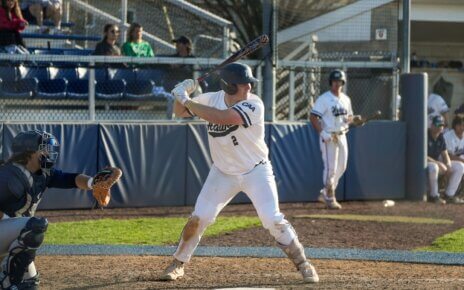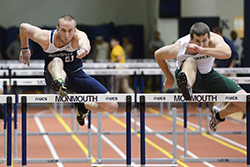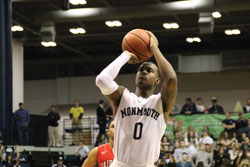Is football a safe sport to play? John Lockwood, a former defensive lineman for the Hawks’ football team, was told by the school’s training staff last season that he wouldn’t be able to play anymore due to too many concussions.
When asked what the cause for his concussions were, he said that he led with his head to try and make the big hit. “When I look back on it, there are so many instances that I can remember leading with my head. Whether it were on a tackle, block, etc., there were many occurrences and I started to realize it more and more after my fifth concussion,” he said. “Your head has no physical capabilities; can’t catch, wrap up and throw. It’s meant to think, not to be used as an object,” he continued.
Studies have shown that the fear of head and neck injuries in the sport of football are at an all-time high over the last eight years. In 2004, a study found that there were roughly 175 reported concussions. In 2012, about 342 have been reported thus far. All players involved were screened for evidence of: past history of head and neck injuries and abnormalities of the cervical spine on physical examination and x-ray film.
In today’s high-collision sport of football, there is no way around the fact that today’s football player is a larger specimen than in 1980. An article in the New York Times showed that there were only three linemen in the NFL who tipped the scales at over 300 pounds in 1980. By 1990, Jere Longman of the New York Times reported that 94 linemen in the NFL were exceeding 300 pounds. In 2010, 20 years later, NFL training camps had 532 players exceeding that weight. MU’s roster alone shows that they have nine players tipping the scales or exceeding 300 pounds.
“Athletes are bigger and faster today than ever before,” said Tim Rehm, the University’s head strength and conditioning coordinator, said. “This increase in size and speed equates to an increase in force delivered with each crushing blow. This increase in force can certainly equate to more intensity for hits. I also believe that the method in which people tackle also has a great deal to do with the problem. Defensive players try to make ‘kill shots’ so they can make the ESPN highlights in which helmet-to-helmet contact escalates. This mentality and tackling style also leads to an increase in head/neck injuries.”
Kevin Callahan, the Hawk’s head football coach since the program began 20 years ago, agrees with Rehm about today’s football player as opposed to 15-20 years ago. “Today’s players are bigger, faster and stronger than they were 15 years ago. I feel that the rules of the game will continue to be adjusted to make the game safer. This year for instance, the change in the kickoff is an attempt to reduce high speed, high impact collisions,” Callahan said.
“The size and speed of athletes have increased tremendously,” Rehm said, “A middle linebacker in the 1980s, for example, might be somewhere around 230 pounds with a 40-yard dash time of 4.8-seconds. Today, a middle linebacker could weigh in at over 260 pounds while still clocking a blazing 4.5 40-yard dash time. It all goes back to the amount of force that can be generated when you increase both mass and velocity.”
Another new rule that Callahan mentioned was the requirement of all players who lose their helmet during a play to report to the sideline for one play and he agrees with it. “I think it is a good rule because it forces players to wear their helmets properly. A proper fitting helmet is one of the best methods to reduce the rate of head trauma and concussions,” Callahan said. He also feels that leading with the helmet is the common cause for head and neck injuries because players are using them as a weapon.
Within the last three seasons, two college players have made national headlines because of head and neck injuries.
Eric LeGrand, a former defensive lineman for Rutgers University, was paralyzed after leading with his head and colliding with a player from Army. At the start of the 2012 season, Devon Walker of Tulane collided with one of his teammates in a game against Tulsa University, fracturing his vertebrae. Whether he’ll be able to walk again is unknown at this point in time.
When asked how these two injuries have affected his approach to practice and tackling, Callahan said, “I have always been very careful to point out the proper tackling techniques. I always emphasize keeping the head up and not leading with the head in any way.” He continued, “In some cases, [head/neck injuries] are a part of the game, in as much as sometimes they are unavoidable. I do, however, think that with proper instruction and practicing the proper techniques, they can be greatly minimized.”
“I believe that while head and neck injuries can be somewhat diminished through proper strength training, they are probably the injuries that are least preventable by a sound program,” Rehm said. “No amount of musculature can protect the neck from severe injury if the neck is in a vulnerable position.”
The game of football is evolving along with the hulking and burly men that play the sport. Even though there is no way to predict the future, rules are being made to make the sport much safer. Gone are the bone-crushing hits from players leading with their head. At the professional level, that it is a personal foul and a hefty fine coming from the player’s bank accounts. At the collegiate level and downward, it’s a personal foul with a potential suspension and even worse; a serious injury. In ten years, the game of football could potentially resemble two-hand touch.
“The recent epidemic of reported concussions and their connection to various debilitating, chronic conditions will have a tremendous impact on how the game is played,” Rehm said. “I see equipment continuing to improve in its ability to protect the athlete, which is great. I also see football organizations at the professional, collegiate and high school levels cracking down on the rules relating to personal fouls involving the head and neck. If played properly, there’s no reason that safety can’t be paramount.”



